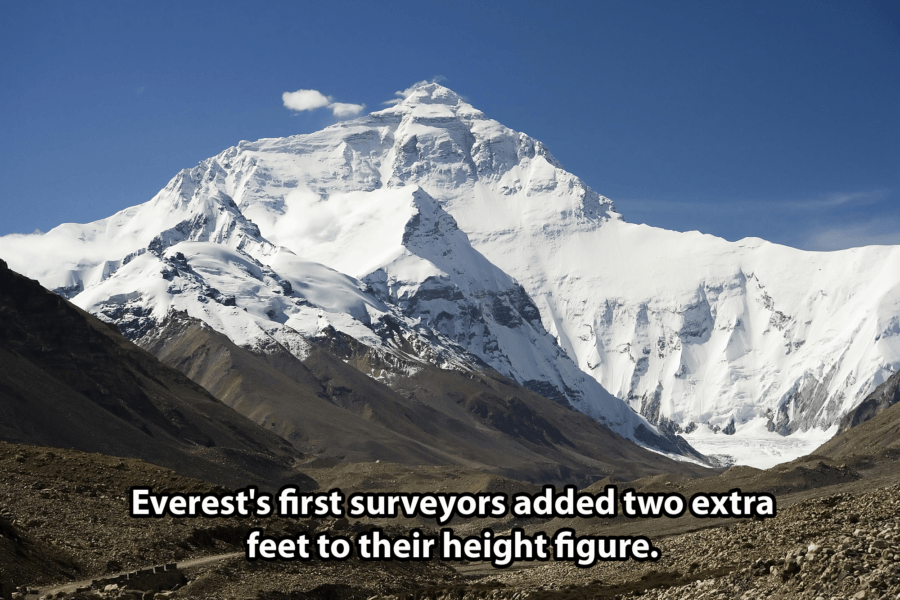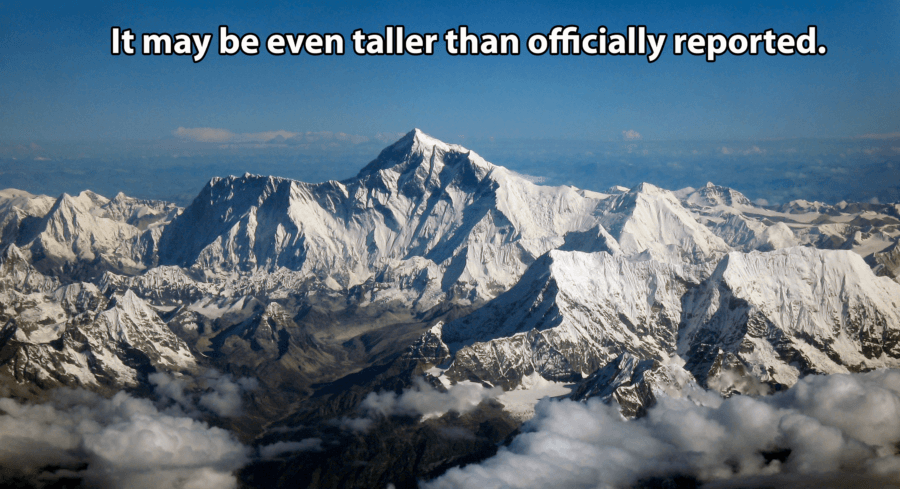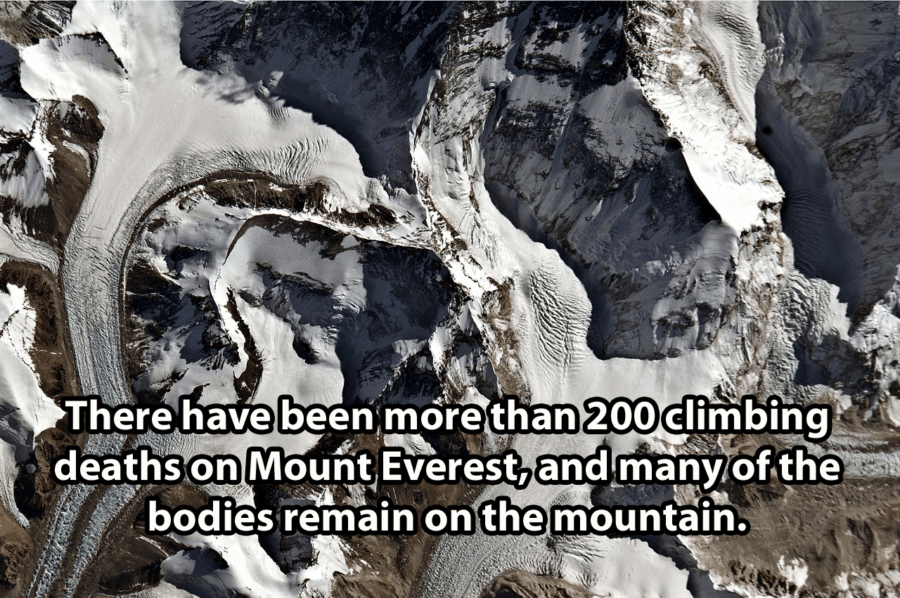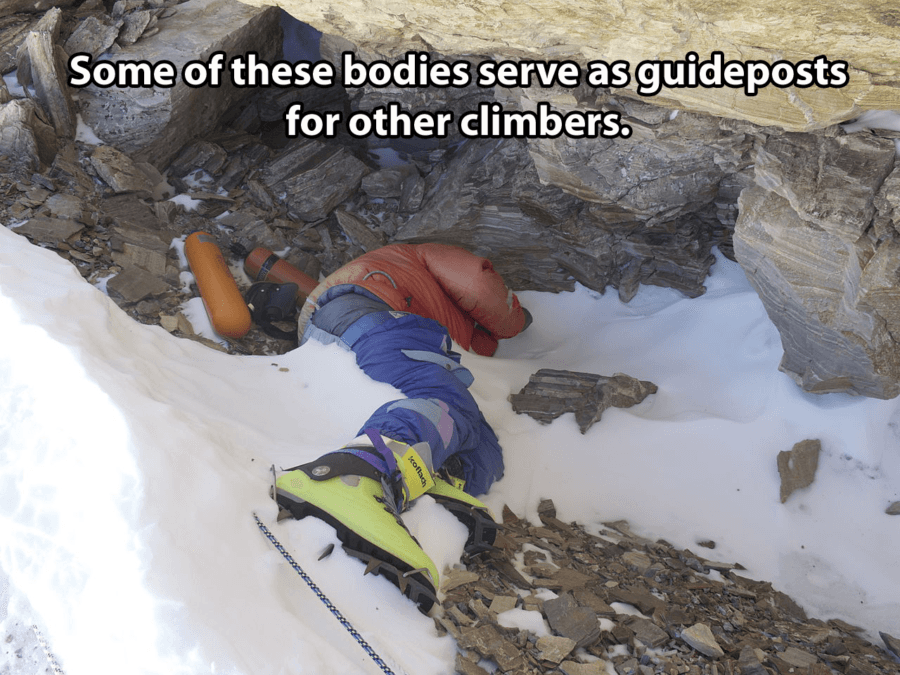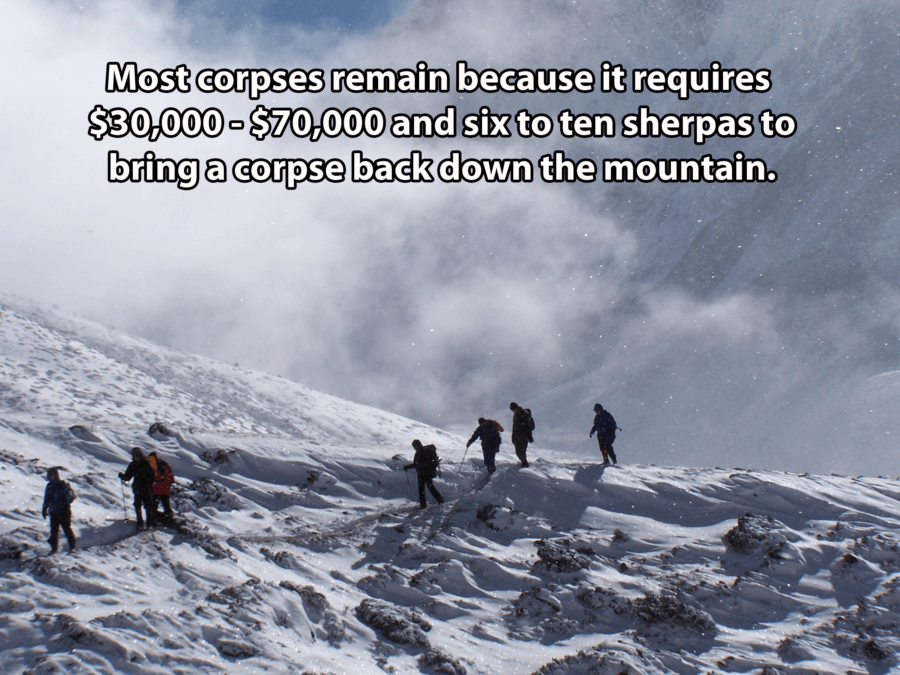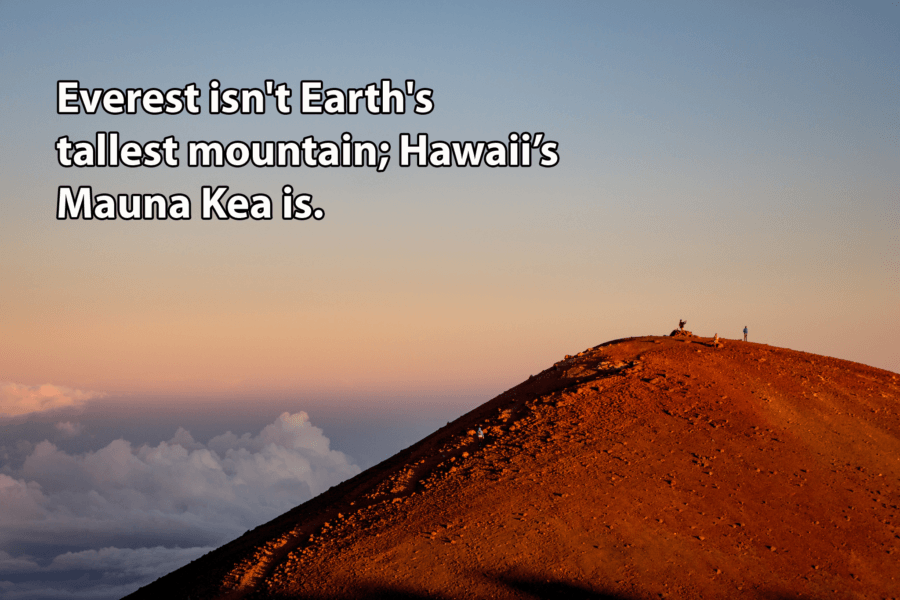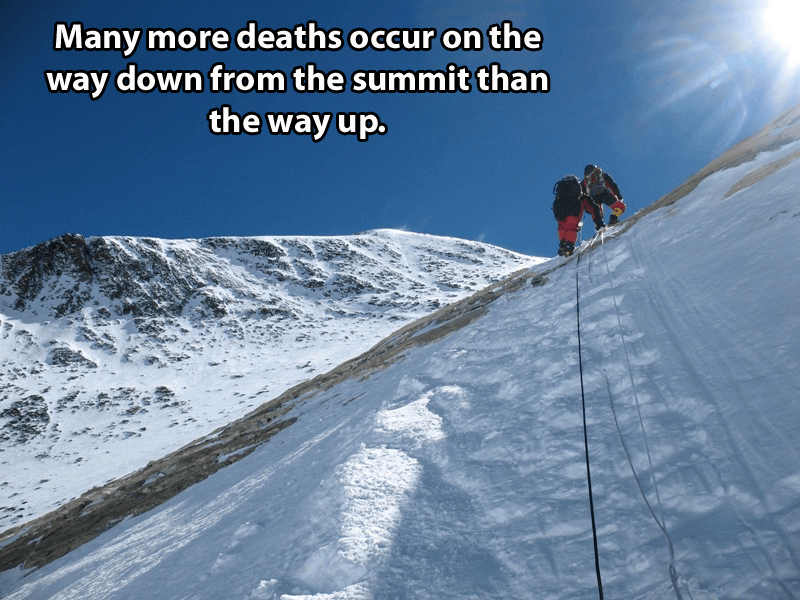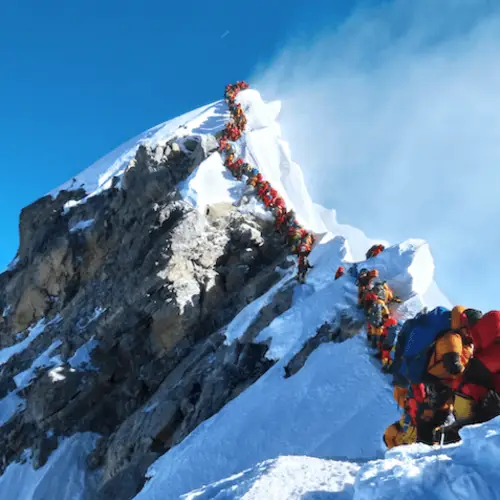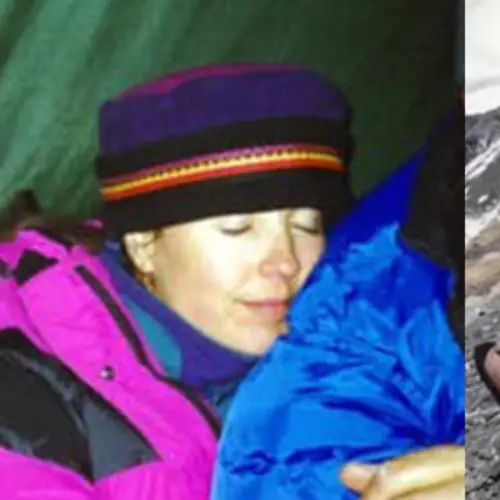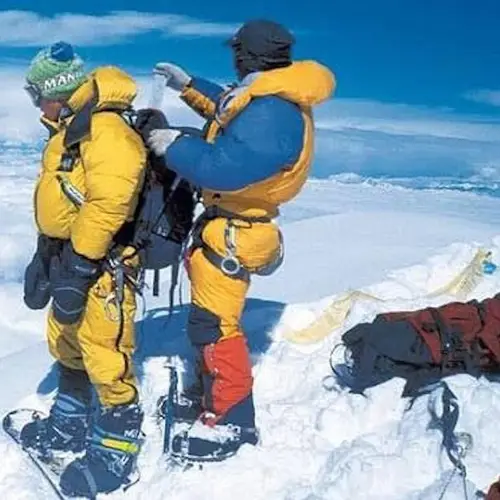1 of 32
Everest's first surveyors added two extra feet to their height figure. When British surveyors in the 1850s first calculated Everest's height at exactly 29,000 feet, they assumed people would think it was a round estimate and thus added two extra feet to their total.Wikimedia Commons
2 of 32
It may be even taller than officially reported. More recent surveys put Everest's height at 29,029 feet but a disputed satellite measurement from 1999 says that number might actually be 29,035.Wikimedia Commons
4 of 32
Some of these bodies serve as guideposts for other climbers. The body of "Green Boots" (pictured), who died in 1996, lies in a cave near the summit.Wikimedia Commons
5 of 32
Most corpses remain because it requires $30,000 - $70,000 and six to ten sherpas to bring a corpse back down the mountain.rkilpatrick21/Flickr
6 of 32
Everest isn't Earth's tallest mountain; Hawaii's Mauna Kea is. Everest is the planet's highest point above sea level. Hawaii's Mauna Kea is about 4,000 feet higher, but most of that height is below sea level.mbiddulph/Flickr
7 of 32
The permit to climb Everest costs $11,000. If you're caught climbing without one, the penalty fee is double the permit cost.Wikimedia Commons
8 of 32
But the full cost of climbing can be as high as $100,000. Between gear, training, travel, and accommodations, TIME estimates that the climb can cost between $35,000 and $100,000.Pixabay
9 of 32
An estimated 50 tons of trash have been left by Everest climbers over the last six decades. Litter includes water bottles, oxygen tanks, equipment, and feces.NAMGYAL SHERPA/AFP/Getty Images
10 of 32
About 26,000 pounds of human feces must be hauled off the mountain every year.STR/AFP/Getty Images
11 of 32
The oldest climber to reach the top was Yūichirō Miura of Japan at age 80.TOSHIFUMI KITAMURA/AFP/Getty Images 12 of 32
He broke the record of Nepal's Min Bahadur Sherchan, who did it at 76 and died on the mountain while trying to reclaim his title at 85.Wikimedia Commons
13 of 32
The record-holder for most climbs to the summit, Kami Rita Sherpa, has done so 22 times.Milan Adhikari/Pacific Press/LightRocket via Getty Images
14 of 32
Recently, the government of Nepal decided to ban solo climbers, blind people, and double amputees from climbing Everest in order to decrease fatalities.Pixabay
15 of 32
Before the ban, two blind climbers were able to reach the summit. They were mountaineers Erik Weihenmayer (pictured, right) and Andy Holzer (not pictured), who did so separately.deetrak/Flickr
16 of 32
Nepalese Sherpa Pem Dorjee married Moni Mulepati atop Everest in 2005, making them the first to wed at the summit.DEVENDRA M SINGH/AFP/Getty Images
17 of 32
Many more deaths occur on the way down from the summit than the way up. Almost four times the amount of climbers die descending from the summit compared with those that die on the final leg of the climb to the summit.Wikimedia Commons
18 of 32
At least one person has died on Everest every year since 1969, except in 1977.Wikimedia Commons
19 of 32
The Nepalese call Mount Everest Sagarmatha, meaning "Forehead (or Goddess) of the Sky."Wikimedia Commons
20 of 32
The Sherpas used to regard Everest as sacred, believing gods and demons lived in the high peaks and the Yeti roamed the lower slopes.Wikimedia Commons
21 of 32
Edmund Hillary and Tenzing Norgay were the first documented climbers to reach Everest's summit on May 29, 1953.Wikimedia Commons
22 of 32
George Mallory and Andrew Irvine attempted to be the first to reach the top of Everest in 1924, but they disappeared. Mallory’s body was found in 1999 — but Irvine, along with his camera, was never found.Wikimedia Commons
23 of 32
The highest rescue mission ever completed was the retrieval of Beck Weathers, an experienced climber who was left for dead twice, but is still alive.YouTube 24 of 32
Mount Everest formed about 60 million years ago, as India crashed into Eurasia. This collision erased a Mesozoic Era ocean named Tethys in the process.Pixabay
25 of 32
The limestone and sandstone rock at the summit were once sedimentary layers below Tethys and are 450 million years old.Wikimedia Commons
26 of 32
Glaciers have chiseled Mount Everest into a giant pyramid with three faces and three ridges. The southeastern ridge is the most traveled climbing route.Pixabay
27 of 32
It's named for a man who never saw it or had anything to do with its history. Andrew Waugh, the British surveyor who first measured the mountain, named it for his predecessor, George Everest, whose India home was near the Himalayan Mountains.Wikimedia Commons
28 of 32
Winds at the summit can reach 175 miles per hour.deetrak/Flickr
29 of 32
The warmest average daytime temperature on the summit is about −2 degrees Fahrenheit.Mário Simoes/Flickr
30 of 32
The valleys below Everest are inhabited by Tibetan-speaking Sherpas, who live in villages at elevations up to 14,000 feet.Wikimedia Commons
31 of 32
Sherpas and Nepali mountain workers made up 40 percent of all Everest deaths over the last century. Sixteen of them died on one single day (April 18, 2014) due to an avalanche.Wikimedia Commons
32 of 32
Like this gallery?
Share it:
